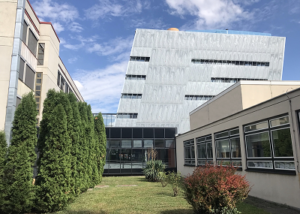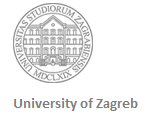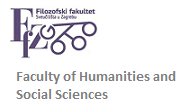SYLLABUS
Course title: Areas of the Translation Profession
Instructors: Dr. Kristijan Nikolić, Dr. Anda Bukvić Pažin
ECTS credits: 5
Status: mandatory
Semester: 3rd
Enrollment requirements: The students must pass the exam in either Political and Legal Institutions in Croatia and English Speaking Countries or EU and International Organizations prior to enrolling in this course.
Course description: The course is designed to familiarize students with two major areas of the translation profession, which are not covered in other courses: translation for the audiovisual media (TV subtitling) and literary translation. The students learn about professional norms and practices, as well as about various translation skills and strategies typical of particular professional context or text type. The course further deals with the following issues: the stages of the translation process, quality assurance, rates, deadlines, different statuses and job profiles, etc. The students meet experienced translators, who tell them about work requirements and specific features of particular types of translation. The students engage in realistic translation assignments.
Objectives: The central objective of this course is to help students learn about translation for the audiovisual media and literary translation. By the end of the course students should be familiar with main professional norms and practices in Croatia, and have the basic skills to work in these two areas of the translation profession.
Course requirements: The students are required to attend regularly and to submit their translation assignments on time. They should be prepared to work both independently and in teams. The final mark is based on the end-of-term translation assignment.
Week by week schedule (the order of topics may vary):
| Session | Topics |
| 1 | Introduction. Course description, goals and requirements. |
| 2, 4, 6, 8, 10, 12, 14, 16, 18, 20, 22, 24, 26 | Translation for the audiovisual media – introduction. Subtitling for television: Specific features of TV subtitling. Getting to know the basic tools of the trade. Norms of the profession. Situation on the Croatian market. Key employers. Working with language revisers. Realistic translation assignments. Discussion and feedback. |
| 3, 5, 7, 9, 11, 13, 15, 17, 19, 21, 23, 25, 27 | Literary translation – introduction. Translation of contemporary novels / short stories: Assignments, discussion, feedback. Translation for the theatre. Specific features. Assignments, discussion, feedback. Norms of the profession. Situation on the Croatian market. Guest translators. Working with publishers, editors, language revisers, proof-readers, dramaturges. |
| 28, 29 | Work on end-of-term assignments. |
| 30 | Feedback. |
Reading:
– Landers, Clifford E. 2001. Literary translation: A Practical Guide. Frankfurt: Multilingual Matters.
– Ivarsson, Jan. 1992. Subtitling for the Media: A Handbook of an Art, Stockholm: Transedit.
– Díaz Cintas, Jorge & Remael, Aline. 2007. Audiovisual Translation: Subtitling.Manchester: St. Jerome Publishing.
– Gambier, Yves, ur. 2003. Screen Translation. The Translator Special Issue 9(2). Manchester: St. Jerome Publishing.
– De Linde, Zoe & Kay, Neil. 1999. The Semiotics of Subtitling. Manchester: St. Jerome Publishing.
– Venuti, Lawrence (ur.). 2000. The Translation Studies Reader. London i New York: Routledge.
– Qvale, Per. 2003. From St. Jerome to Hypertext. Manchester: St. Jerome Publishing.
– Venuti, Lawrence. 1995. The Translator’s Invisibility. London i New York: Routledge.
– Davies, Kathleen. 2001. Deconstruction and Translation. Manchester: St. Jerome.
– Flotow, Louise von. 1997. Translation and Gender. Translating in the ‘Era of Feminism’. Manchester: St. Jerome Publishing.



